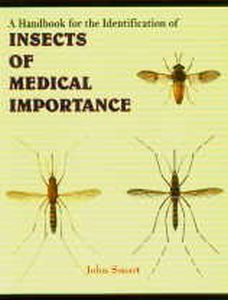
Contents: Foreword. Author’s preface. I. Introduction: structure of insects; development and life-history; classification and nomenclature; zoogeography. II. Diptera: structure; life-history; classification; key to families of Diptera; key to blood-sucking flies. III. Diptera: Nematocera except mosquitoes: Tipulidae—Crane flies; Psychodidae--Moth flies; Chiro-Nomidae—Gnats; Ceratopogonidae—Biting midges; Simuliidae-Black flies; Anisopodidae—Window gnats. IV. Diptera—Brachycera: Tabanidae—horse flies; Rhagionidae—Snipe flies; Sceno-Pinidae—Window flies. V. Diptera—Cyclorrhapha: Phoridae; Syrphidae—Hover flies; Drosophilidae—small fruit flies; Chloropidae—Eye flies; Sepsidae; Piophilidae—Cheese Skipper; Gasterophilidae—Horse bots; Muscidae—House flies, etc.; Calliphoridae—Blow flies, etc.; Oestridae—Warble flies; Pupipara—Louse flies; Myiasis; Maggots in food. VI. Diptera—mosquitoes: Examination of mosquitoes; Culicini: Culex fatigans, Aedes aegypti, A. Scutellaris-group, A. albopictus, key to the genera; Anophelini: keys to Old World species, malaria carrying species, distribution and literature. VII. Other insects: Orthoptera—Cockroaches; Anoplura—Lice; Hemiptera—Bugs; Lepidoptera—Butterflies ad Moths; Coleoptera—Beetles; Hymenoptera—Ants, Bees and Wasps. VIII. Suctoria—Fleas/Karl Jordan: Keys to sub-families; notes on genera and species. IX. Arachnida/R.J. Whittock: Scorpiones—Scorpions; Araneae—Spiders; Acarina—Mites and Ticks. X. Pentastomida, etc.: Pentastomida—Tongue worms; Myriapoda—Millipedes and Centipedes; Crustacea.—Crabs, etc. Appendix: collecting and preserving insects. Index.
"The book deals with the identification of old world arthropods of known medical importance. New world species have been excluded except when for the shake of completeness passing reference is made to some particularly important species which should be within the general knowledge of anyone interested in the subject of medical entomology.
Quantitative analyses of insect populations and their impact on man have led the medical entomologists into the field of epidemiology, and he may therefore be regarded as taking in this particular sphere, a part in the development of preventive medicine.
The work has been undertaken by the author, who has been at pains to limit his text to matter which is essential to the accurate determination of the species, and a bare mention of the diseases with which they are associated. Every effort has also been made to present the subject in the simplest possible way. However, certain general aspects of the subject are outlined briefly and wherever possible fully labelled figures have been interested in the text to provide information on the morphology of the more important insects and other arthropods discussed." (jacket)